Our History
We are happy to take you into the rich history of Amrâth Berghotel Amersfoort
We are happy to take you into the rich history of Amrâth Berghotel Amersfoort
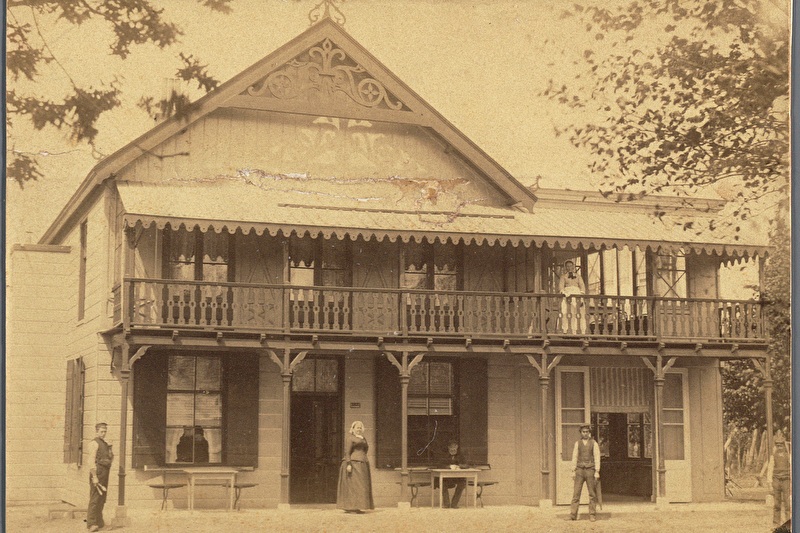
Around the year 1880 a spa was founded on the Amersfoortse Berg, called Hotel de Berg. It opened her salon doors to spa guests.
A beautiful, chalet-shaped structure with a facade-wide veranda, provided with shade from the covered balcony. Above this balcony was a projecting cornice with beautifully carved ornamental woodwork. This spa, located in an oxygen-rich green environment, stands on the then still bare mountain, the slopes of which are covered with scrub and mainly low oak coppice. The view is beautiful, over the Utrechtse Heuvelrug, the Eemdal and, far away in the depths, the old city. The old and then only connection between Amersfoort and Utrecht was a dirt road, sheltered on both sides by young beeches. Guests arrived at the spa on horseback or in a carriage. These were mainly wealthy ladies from the big cities who drove up in a fiacre, after which waiting staff immediately rushed to unload their luggage. At the beginning of the twentieth century, the Spa attracted many wealthy Dutch people to the Amersfoortse Bergkwartier because of the natural environment. An ideal environment to catch your breath and let the tired or sick body recover. The modest spa hotel had 24 rooms. In 1902, Hotel De Berg passed into the hands of the Martens family…
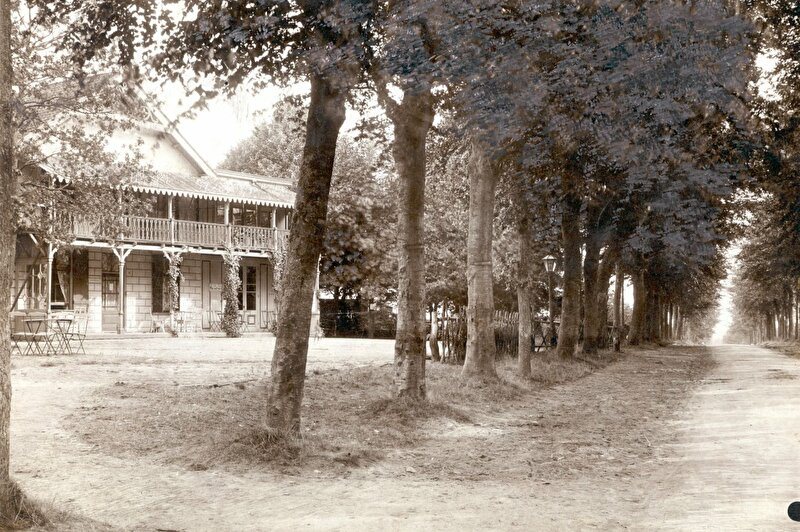
As long as the hotel on the Berg served as a spa, it was open from early spring to late summer. When Hotel De Berg, passed into the hands of the Martens family in 1902, was converted into the Berghotel, it received a wooden watchtower in the center of the tiled roof. From this tower one could even see Utrecht and Ede in clear weather. This turret determined the image of the Berghotel until the Second World War. When the surrounding beeches and oaks had grown so high that nothing but green could be seen from the tower, it was demolished. The hotel had now grown into a restaurant with hotel accommodation…
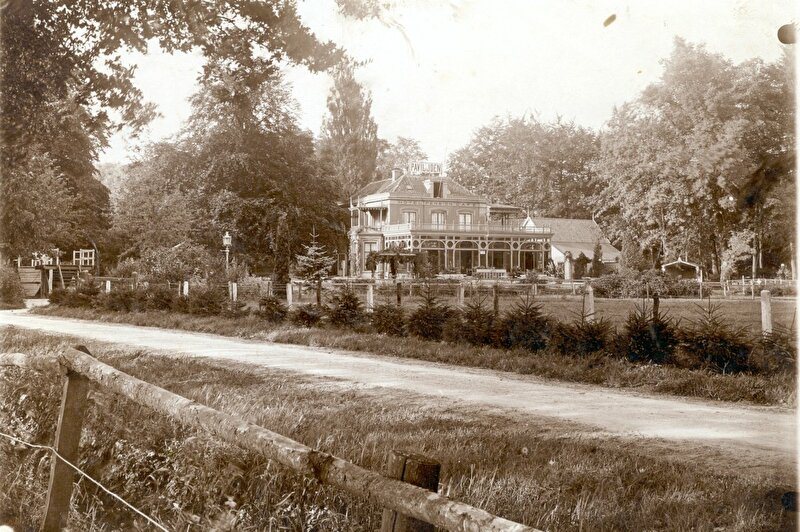
Around 1905, the restaurant accommodation, housed in a large dining room, was expanded with a tea house on the opposite side. The large outdoor terrace offered a view of Little Switzerland, the green area on the side of Borneoplein. On sunny days, the terrace filled with day guests. They rested during a walk with a cup of tea or coffee, a glass of lemonade for the children. Both the restaurant and the tea house were frequented by the well-to-do until well after the war. Incidentally, the Berghotel was not the only hotel in Amersfoort around the turn of the century. Other beautiful outdoor hotels were hotel Birkhoven and hotel Oud Leusden. In 1918 Villa Amersberg was built next to the Berghotel…
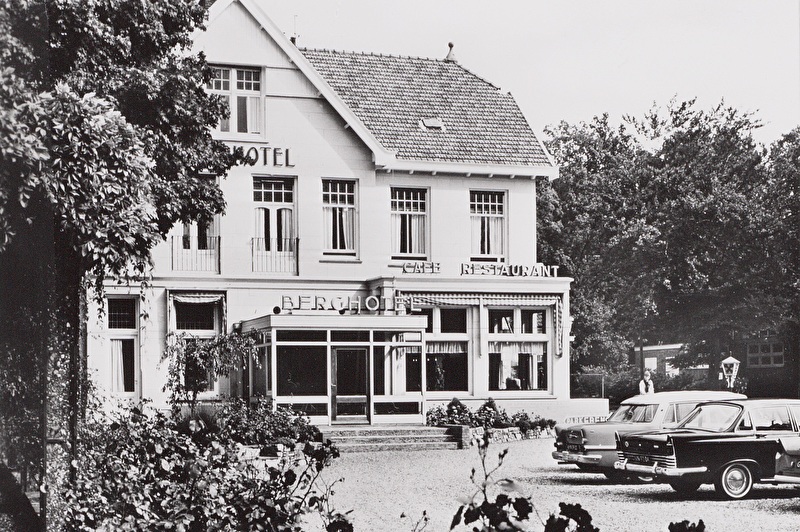
During the war years, part of the Berghotel was confiscated by the occupying forces. In addition, the large restaurant room, now known as the Van Campenzaal, served as a court where speedy justice was applied to prisoners from nearby Kamp Amersfoort and people from the resistance…

After the war, the restaurant room gradually regained its original purpose as a space where the wealthy and the cultural and administrative elite of Amersfoort dined and held their wedding receptions. What the Amstelhotel was to Amsterdam and the Des Indes to The Hague, the Berghotel was to Amersfoort and the surrounding area. In the mid-1950s, the Martens family withdrew and sold the hotel to the Bindels family…
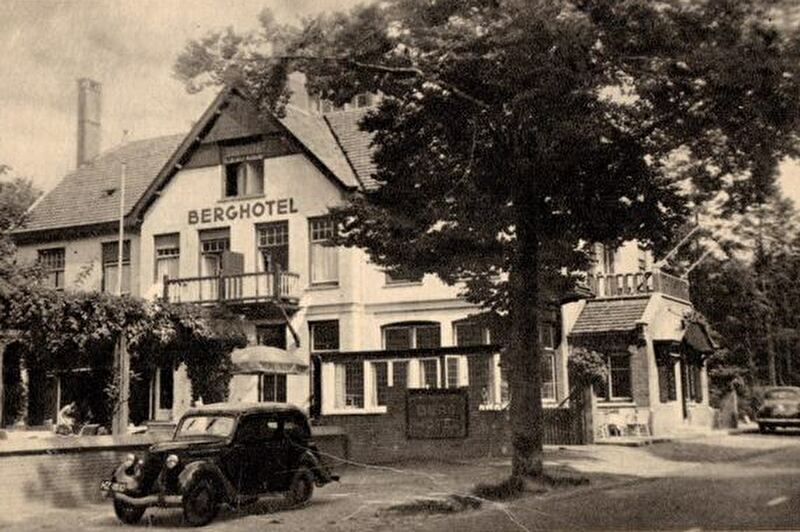
This family sold the hotel to the Heilijgers company in the late 1980s, making it part of the Dutch Hotel Company. Until the 1980s, the Berghotel remained a restaurant with 24 rooms. Since then, thanks to its rapidly growing prosperity, it has been transformed into a modern business hotel with a restaurant and developed into a 4-star accommodation.